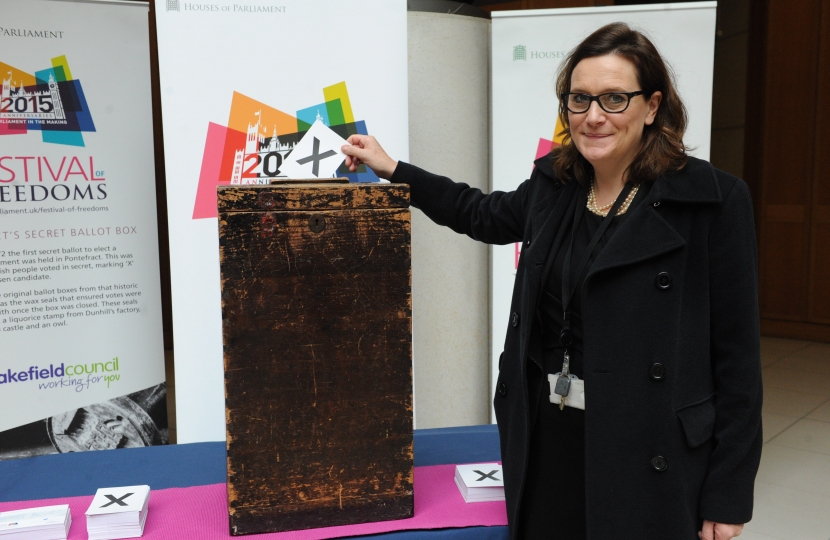
Rebecca Harris viewed an original ballot box used in the first secret ballot to elect a Member of Parliament in the Houses of Parliament earlier this week. The box is on display in Parliament until Monday 21 September at 1pm as part of the Festival of Freedoms.
The ballot box is on loan from Pontefract Museum, Wakefield Council’s Museum Service. It was used during an historic election by-election in the town of Pontefract on 15 August 1872, was won by Liberal candidate H. C. Childers. This was the first time British people voted in secret, marking ‘X’ next to their chosen candidate. The election was marked as a remarkable event by the Times newspaper for its absence of violence and drunkenness, which, up to this point, had been the norm at all elections. This was because that this election was the first after the Ballot Act of July 1872, which made provision for voting in secret, despite fierce opposition within Parliament.
Rebecca said: “It was fascinating to view the original ballot box that was centre stage in the first secret ballot in Britain. The box is an important symbol of electoral reform; it received the votes cast in the first election held in secret in August 1872, which is a freedom we still hold dear today. I was also delighted to have an opportunity to speak with curators Dave Evans from Pontefract Museum and John Whitaker from Wakefield.”
The ballot box still has the wax seals that ensured votes were not tampered with once the box was closed. These seals were made with a liquorice stamp from Dunhill’s factory, engraved with a castle and an owl. The box is made of wood, by Waterlow & Sons, in 1872.